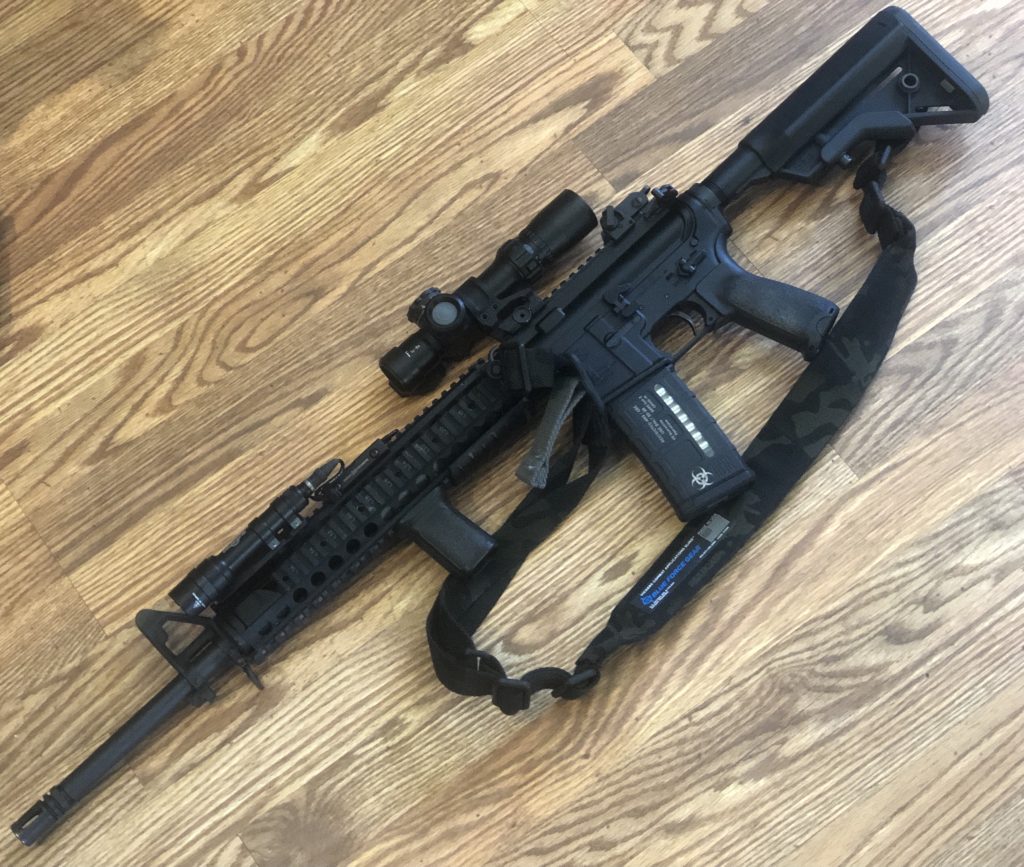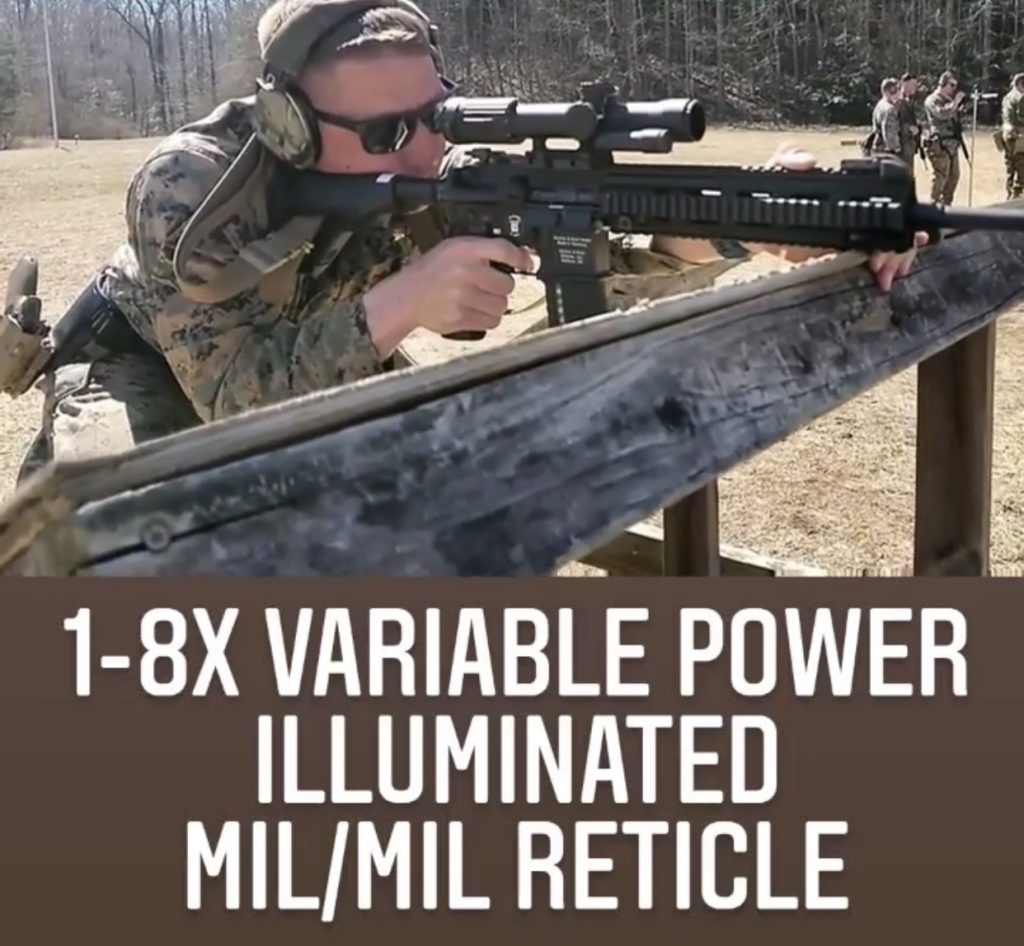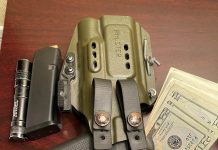
The Trijicon 1-8x Mil/Mil VCOG was chosen by the United States Marine Corps as the SCO, or Squad Common Optic. Starting in January, according to Military.com, the optic began being fielded for the M4, M4A1, and M27 rifles. I suspect extra optics, if available, could see their way onto M16A4’s as well.
I certainly like running a 1-8 on mine.

The SCO, made by Trijicon, is a magnified day optic that features an optionally illuminated aim-point designed to improve a Marine’s targeting, according to the release.
Marines will be able to use the 1-8X variable-powered SCO to identify targets at both close and long distances, providing twice the visual range of the 4X fixed-power Rifle Combat Optic, which is also made by Trijicon. -Military.com

That’s certainly a very simple take on the topic, but the nuance isn’t that hard to understand moving forward.
The Marines wanted in on the LPVO game because that’s the best game there is in GP rifle/carbine optics, they trust Trijicon to deliver the bombproof scope they wanted now, and they had an eye on future systems too.
For those who didn’t know, when the Marines went to the ACOG fleetwide they bought several models. The two most prominent looked identical, but were for the M16A4 and M4 respectively. They needed two scopes because the trajectory from the two rifles was different. Then they had the TA11’s that were built as the SDO’s for M249 SAWs, both 20″ and 14.5″, those then got shoehorned in as a ‘good enough’ solution when the Corps picked up the M27, a 16″ gun. Since that time a PIP had also been suggested and running for the M16’s, the M4’s, the ammunition, and the ACOGs on top of them… all of which compound the complexity of keeping the optics current to the weapons.
The problem was the specialized reticle for each rifle and ammunition combination. Change one or the other and your exterior ballistics change enough for the very precisely scaled 3.5/4x reticle to now be off again, probably still useable but not with the speed of the original configuration. ACOGs with BDC’s are built for one rifle barrel length, one round and, to be very technical, one usually mild atmospheric condition.
The SCO has done away with that complexity. By picking a milliradian front focal plane reticle that, with just a little information in a decent ballistics program, can be used on any rifle with a variety of ammunition, the Marines have very nicely future proofed their optics suite. The rugged 1-8’s will work nicely on nearly every rifle or carbine, current and near future (looking at the NGSW).
Not only have the Marines advanced their individual optic capability for observation and accuracy to near sniper optic levels from turn of the century, they have increased the flexibility of the optic and narrowed the number of varieties they need down to one. Whether 5.56, 7.62, or a future caliber, the SCO will offer the individual Marine function that we couldn’t have fathomed in 2001, or even 2010. Positive target ID within the full effective range of the rifles, ranging and observation for indirect fire support and close air support, and a flexible increase in Marines’ shooting performance anywhere from CQB to maximum range like no previous optic.



